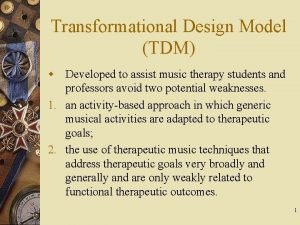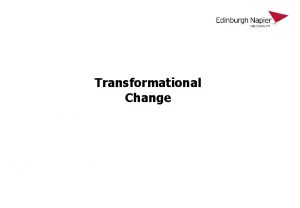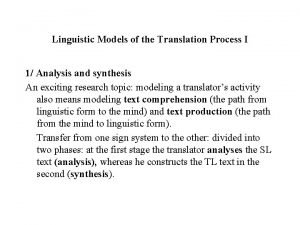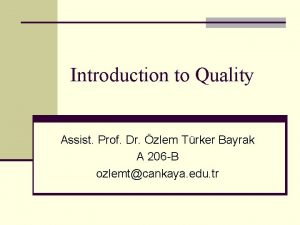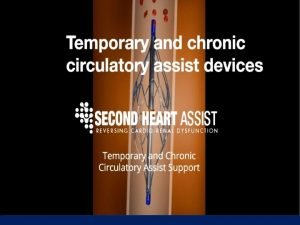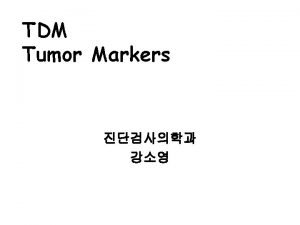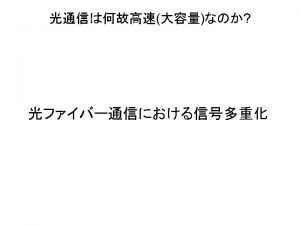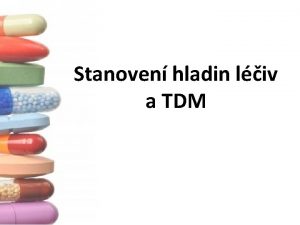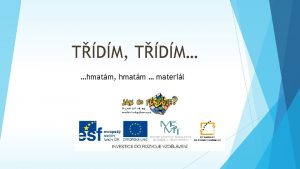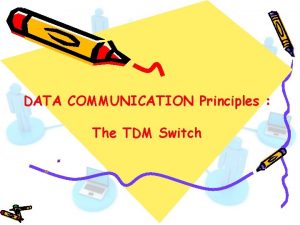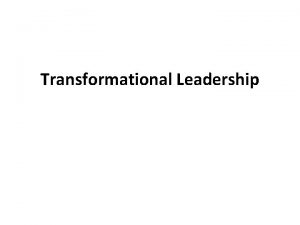Transformational Design Model TDM w Developed to assist








- Slides: 8

Transformational Design Model (TDM) w Developed to assist music therapy students and professors avoid two potential weaknesses. 1. an activity-based approach in which generic musical activities are adapted to therapeutic goals; 2. the use of therapeutic music techniques that address therapeutic goals very broadly and generally and are only weakly related to functional therapeutic outcomes. 1

Transformational Design Model (TDM) 1. Diagnostic and functional assessment of the patient 2. Development of therapeutic goals/objectives 3. Design of functional, non-musical therapeutic exercises and stimuli 4. Translation of step 3 into functional, therapeutic music interventions 5. Transfer of therapeutic learning to “real-world” applications 2

Goals and Objectives w 1. 2. 3. 4. 5. Typically fall into one of five domains: Cognitive Affective Sensorimotor Behavioral/Social Physiological 3

Goals and Objectives w Need directional language, e. g. : • Client will increase ability to … • Client will decrease the number of … 4

Goals and Objectives w Must be functionally relevant and impact the patient’s day to day life w Require 3 characteristics – Observable – Measurable – Attainable/Achievable 5

Goals and Objectives w Goals ~ Long-term changes in behavior or functioning, e. g. w A. Increase client’s ability to ambulate independently or; w B. Increase client’s socialization skills w Objectives ~ Short-term changes in behavior/experience, e. g. w A. Increase client’s ability to ambulate with an assistive device or; w B. Increase client’s ability to initiate a conversation 6

Goals and Objectives w Goals and objectives flow directly from a diagnostic and functional assessment of a client, e. g. a MVA client with a TBI presents with slurred speech and decreased UE ROM which may effect: 1. her ability to communicate and 2. to function independently. w Goals for this client then would be to: 1. Increase client’s ability to communicate and; 2. Increase client’s ability to independently perform ADL’s 7

Objectives & Numerical Qualifiers w Objective ~ Client will increase ROM at the right elbow. w Client will increase ROM at the right elbow by 33% by April 21 st, 2002. w Objective ~ Client will increase ability to ambulate independently. w Client will increase ability to ambulate independently for 30 feet by April 21 st, 2002. 8
